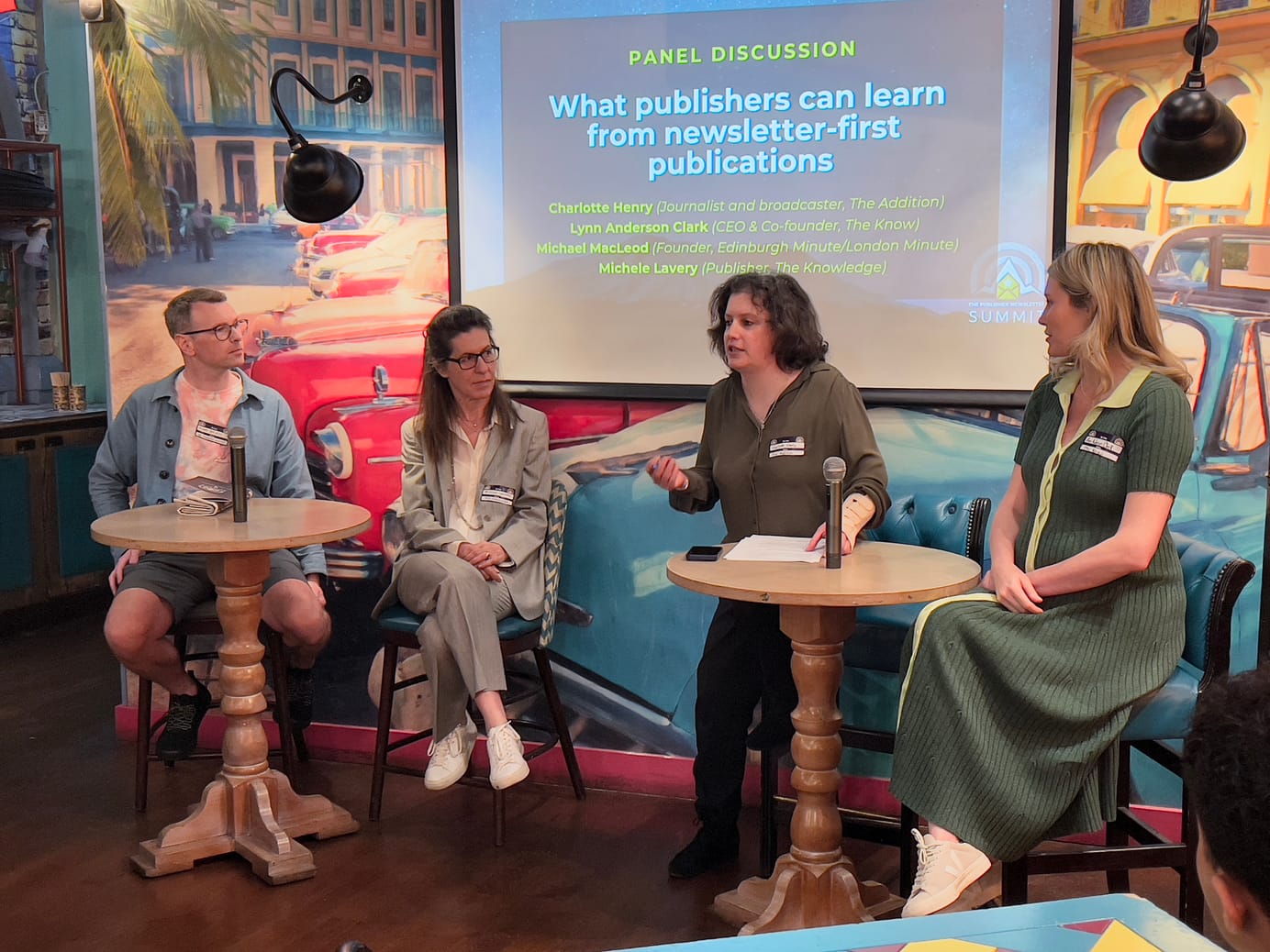Life in the livestream; liveblogging and the news cycle - #newsrw
How are news organisations dealing with stream publishing? Kathryn Corrick directs the flow…
 Jason Mills, editor, web for ITV News: the ITV site is built on a stream. it shows that you don’t have to be a station to have a news channel.
Jason Mills, editor, web for ITV News: the ITV site is built on a stream. it shows that you don’t have to be a station to have a news channel.
Raju Narisetti, managing editor, Wall Street Journal Digital Network: It’s a flowing list of content – you name it, it’s in the stream. We’re doing more of it because his competition is not the other sites – it’s readers’ time, their one non-renewable resources. Streams give them more for their time. And people are used to seeing discrete periods of time for events – why can’t news coverage happen in the same way.
Patrick Heery, UK editor, BBC News website: Streaming news has always been part of their operation – but Ceefax is closing. So they’re doing it in new ways. They’re mixing up video, content from correspondents and the best of the user content. They’re hugely popular with the audiences. They’ve reorganised the newsroom to bring the Twitter writers into the heart of the newsroom.
 Pete Clifton, executive editor, MSN: They can now switch to liveblogging when they need to – either doing it themselves or through the press association. They need to pick their battles, though. They know they’re good at entertainment, so they target those occasions. They should also think about innovative things, to balance their lack of scale. They’ve started doing live trending blog on the front page, driven by signals from social media. They want to make live sports coverage more interactive and involve the audience. But simplicity can be the key on alive page, especially on mobile.
Pete Clifton, executive editor, MSN: They can now switch to liveblogging when they need to – either doing it themselves or through the press association. They need to pick their battles, though. They know they’re good at entertainment, so they target those occasions. They should also think about innovative things, to balance their lack of scale. They’ve started doing live trending blog on the front page, driven by signals from social media. They want to make live sports coverage more interactive and involve the audience. But simplicity can be the key on alive page, especially on mobile.
Ben Schneider, senior director and general manager for CoveritLive, Demand Media: It’s difficult to make sense of the vast firehose of information coming at you. That’s what you turn to the big players for a story. They want to bring those streams into one place where they can be shaped by the journalist or editor.
Biggest disasters?
 Raju: Google wasn’t really indexing the stream – it didn’t see it as a single piece of content. Plus, 40% of their visitors go straight to the home page. What do they do when a both a stream and a popular branded blog are covering the same event? They run the stream on the page, and a link to the blog as well.
Raju: Google wasn’t really indexing the stream – it didn’t see it as a single piece of content. Plus, 40% of their visitors go straight to the home page. What do they do when a both a stream and a popular branded blog are covering the same event? They run the stream on the page, and a link to the blog as well.
Jason: Not that I can think of yet. Their stream isn’t an add-on – it is the site. Can it be done with all stories? Pretty much. Stories develop. We just open source our journalistic notebook. But your publishing tool has to be very fast – it was by Made by Many.
Ben: There was a liveblog covering pro-Obama issues. Their Twitter hashtag automated importing starting accidentally pulling in anti-Obama comments. They quickly removed them, but the realised that unfettered access may not be the answer.
Pete: Accidental obituary releases. Large “Hardon” Colliders.
 Patrick: It’s more complicated than it should be to start up live pages.
Patrick: It’s more complicated than it should be to start up live pages.
Tips from the audience on** B2B liveblogging**:
- Lots of prepublicity
- Work in co-operation with the audience
- Open a dialouge
- Use tools that work in low bandwidth.
Pete: Pin the key points to the top, so people can get a quick picture of what’s happening.
Ben: It’s very contextual to the event: photos are vital to an Apple event, for example.
What’s the next big innovation in liveblogs?
Ben: What is everyone asking for? One is more data. That’s a theme for everything. And how can they do more the engage people more? We need more intuitive ways of filtering through massive amounts of content.

What’s the influence of sport on the influence of liveblogging? What might emerge from the Olympics?
Jason: We didn’t look at sport, we looked at how people consumed news in general; the Arab Spring etc.
Raju: Sports has been less of an influence to us – for us, it’s been the way markets are covered. The elements that make for a good stream are sometimes not available for sport because of rights issues – the video and the audio.
 Pete: The sports people were pioneers in showing how you can write copy in a way that compels people even without video. Not everyone can do it. Sport really pointed the way at the BBC.
Pete: The sports people were pioneers in showing how you can write copy in a way that compels people even without video. Not everyone can do it. Sport really pointed the way at the BBC.
Ben: Sports is a huge part of what CoverItLive is used for. The Olympics presents a unique challenge. Coming from across the pond, there’s a delay effect (for the US audience). They want time-shifted streams. Give them the opportunity to see it again.
**Everybody is build live platforms – have any of you figured out the magnetisation piece? We know users are super-enganged, but we struggle with metrics. **
Conrad Quilty-Harper: Engadget used sponsorship – they knew how many people would be coming. There should be more people liveblogging from the field. People today want to sit in offices doing it – not at the event. (I beg to differ, sir – I’m typing this in the field. ;-))
Raju: Time-span becomes a relevant measure again. People spending more time on the site means more ad impression, which are good for us.
Jason: Two models: banner ads and sponsorship. The tagghing enables sponsors to sponsor certain parts of the stream.
Pete: The story we tell advertisers is people coming back to the site and staying longer – it’s not a specific sell, but live is part of that. If we can bring all the live elements together, it will be a great place to look for sponsorship.
Chris Hamilton, BBC: Is the article dead at the hands of live digital streaming?
Ben: No. But it is certainly secondary if not tertiary. But there will always be the case where people need to rebuild context around something.
Pete: No, you have to offer the choice. Some people just want a well-written, concise version of what occurs.
Patrick: No. There are lots of live football reports – but a match report at the end of it.
Raju: I would be very cautious about streams that people just watch rather than engaging with it – because your business model goes away.
Jason: Our audience doesn’t distinguish. They don’t mind. We are looking at different ways of telling stories using the stream.
Sign up for e-mail updates
Join the newsletter to receive the latest posts in your inbox.











